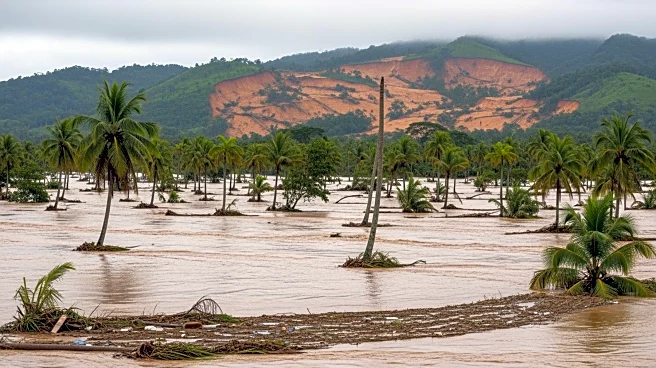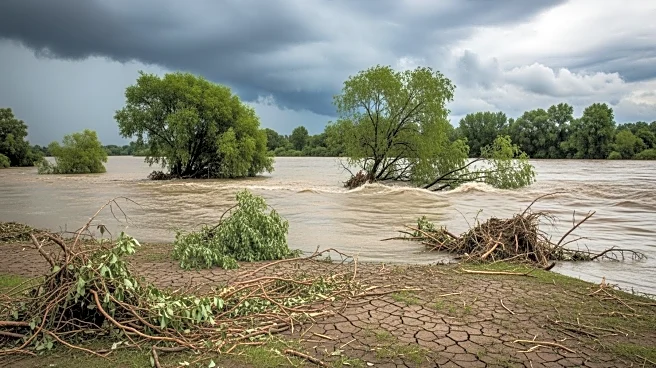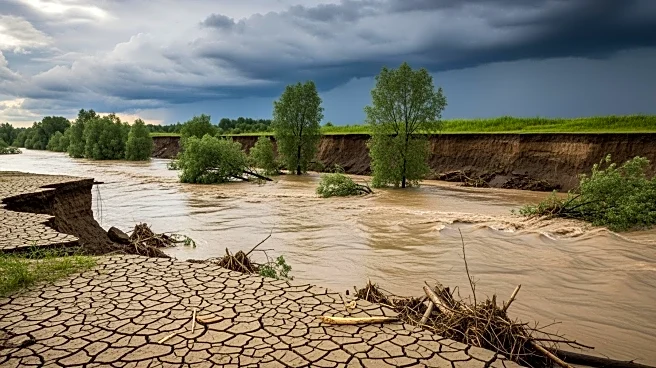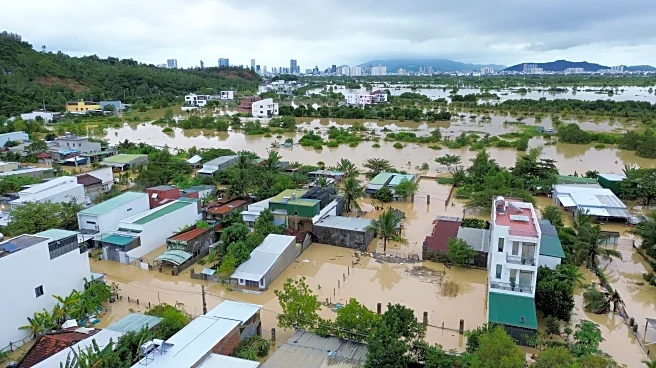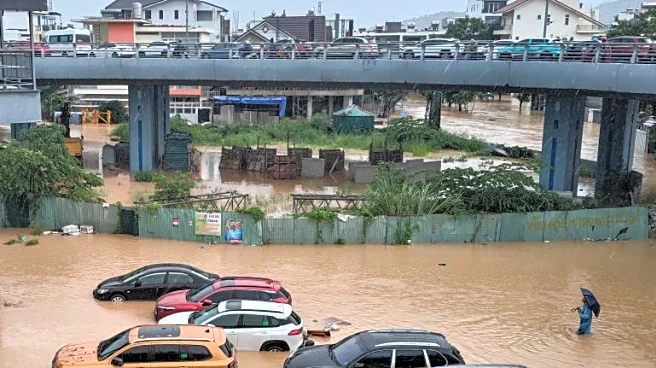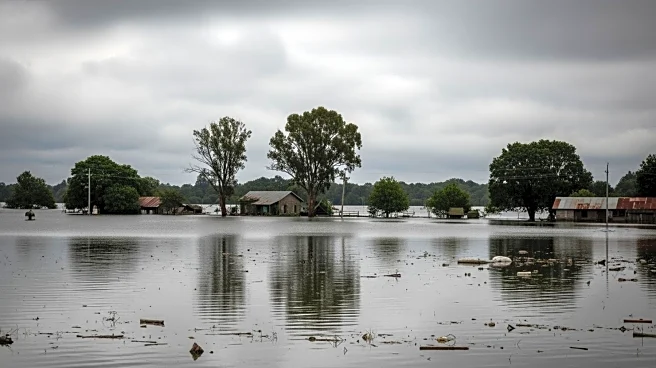What's Happening?
Heavy rains in Southeast Asia have led to widespread flooding and landslides, resulting in a rising death toll and significant displacement. Vietnam has reported 91 deaths, with 11 people missing, as severe
flooding affects provinces from Quang Tri to Lam Dong. The worst-hit area, Dak Lak, has seen 63 fatalities, primarily due to drowning. Helicopters are being used to deliver aid and evacuate residents. In Thailand, torrential rains have caused flash flooding, affecting nearly 2 million people and resulting in five deaths. Malaysia is also experiencing flooding, with over 12,500 people evacuated across nine states. The monsoon season, which typically lasts from November to March, is exacerbating the situation.
Why It's Important?
The flooding in Southeast Asia highlights the increasing vulnerability of the region to climate-related disasters. Vietnam, one of the world's most flood-prone countries, faces significant economic damage, estimated at $1.2 billion, with extensive damage to homes and crops. The situation underscores the impact of climate change, as scientists warn of intensified storms and rainfall. The International Organization for Migration has announced aid from South Korea to assist displaced communities. The ongoing floods pose a threat to agriculture, particularly in Vietnam's coffee-growing regions, and disrupt economic activities in affected areas.
What's Next?
Vietnam's weather agency has warned of continued rains and a new tropical depression forming, which could worsen conditions. Authorities in Thailand and Malaysia are preparing for further rainfall and potential flooding. The international community may increase aid efforts to support affected regions. Long-term strategies to mitigate climate change impacts and improve disaster preparedness are likely to be discussed among Southeast Asian nations.
